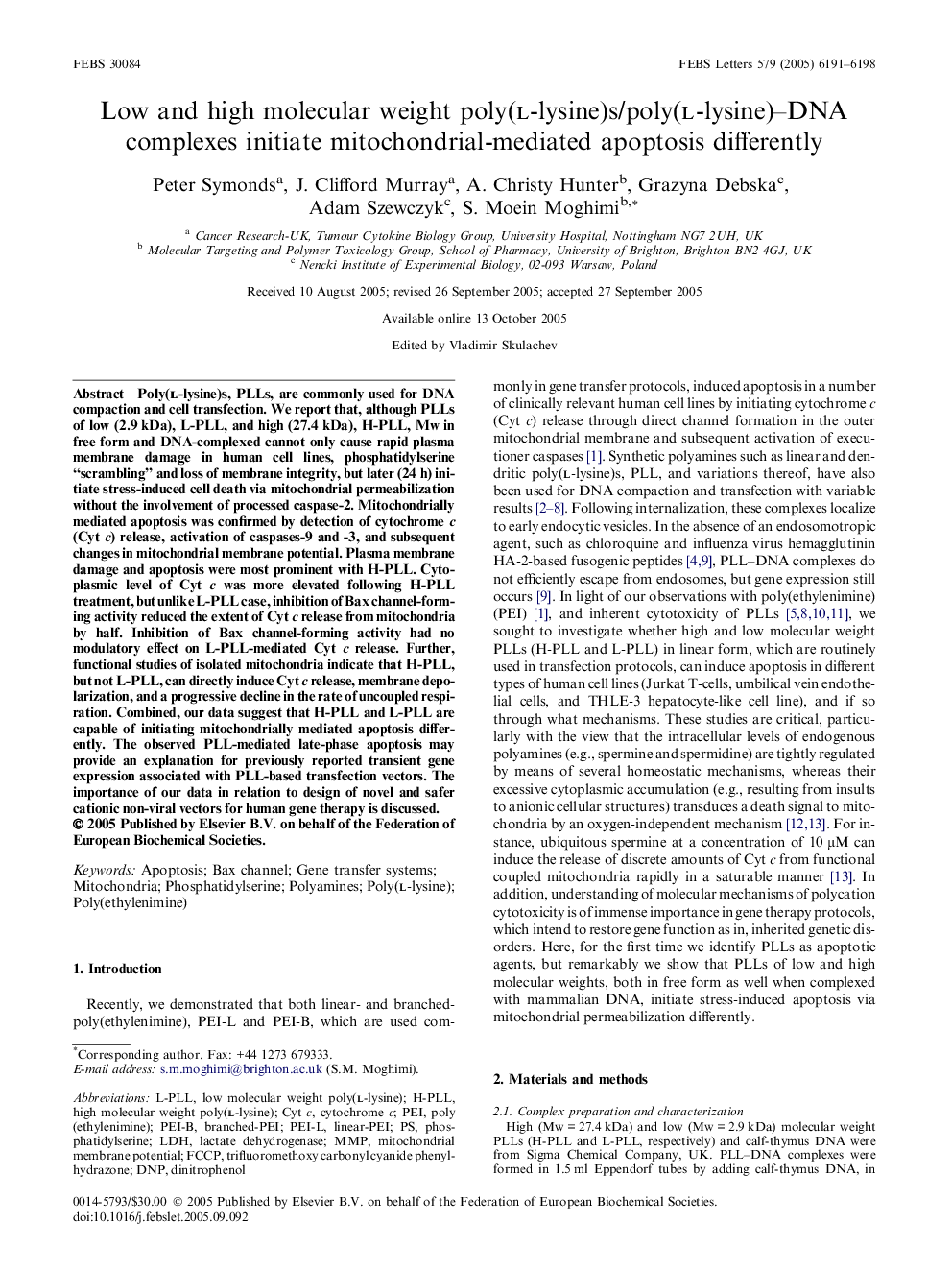| Article ID | Journal | Published Year | Pages | File Type |
|---|---|---|---|---|
| 2051963 | FEBS Letters | 2005 | 8 Pages |
Poly(l-lysine)s, PLLs, are commonly used for DNA compaction and cell transfection. We report that, although PLLs of low (2.9 kDa), L-PLL, and high (27.4 kDa), H-PLL, Mw in free form and DNA-complexed cannot only cause rapid plasma membrane damage in human cell lines, phosphatidylserine “scrambling” and loss of membrane integrity, but later (24 h) initiate stress-induced cell death via mitochondrial permeabilization without the involvement of processed caspase-2. Mitochondrially mediated apoptosis was confirmed by detection of cytochrome c (Cyt c) release, activation of caspases-9 and -3, and subsequent changes in mitochondrial membrane potential. Plasma membrane damage and apoptosis were most prominent with H-PLL. Cytoplasmic level of Cyt c was more elevated following H-PLL treatment, but unlike L-PLL case, inhibition of Bax channel-forming activity reduced the extent of Cyt c release from mitochondria by half. Inhibition of Bax channel-forming activity had no modulatory effect on L-PLL-mediated Cyt c release. Further, functional studies of isolated mitochondria indicate that H-PLL, but not L-PLL, can directly induce Cyt c release, membrane depolarization, and a progressive decline in the rate of uncoupled respiration. Combined, our data suggest that H-PLL and L-PLL are capable of initiating mitochondrially mediated apoptosis differently. The observed PLL-mediated late-phase apoptosis may provide an explanation for previously reported transient gene expression associated with PLL-based transfection vectors. The importance of our data in relation to design of novel and safer cationic non-viral vectors for human gene therapy is discussed.
